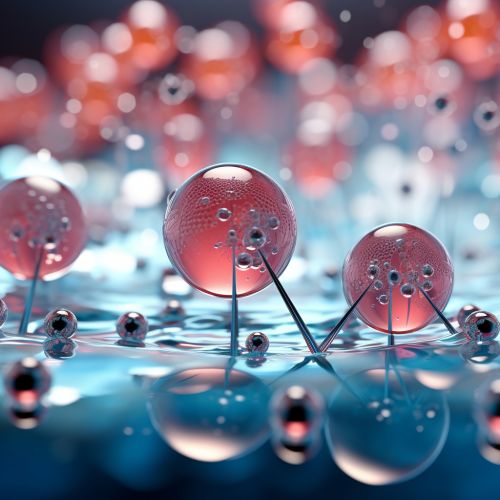The Role of Nanotechnology in Water Treatment
Introduction
Nanotechnology, the manipulation of matter on an atomic, molecular, and supramolecular scale, has emerged as a powerful tool in various fields, including water treatment. This article explores the role of nanotechnology in water treatment, focusing on its applications, advantages, and challenges.


Nanotechnology and Water Treatment
Nanotechnology offers a range of innovative solutions for water treatment, addressing some of the most pressing challenges in the field. The primary application of nanotechnology in water treatment is the removal of contaminants, including heavy metals, organic pollutants, and pathogens.
Nanofiltration
Nanofiltration, a pressure-driven membrane filtration process, is widely used in water treatment. It effectively removes divalent ions, multivalent ions, and small organic molecules from water. Nanofiltration membranes, made of nanoscale materials, have high selectivity and permeability, making them efficient for water purification.
Nanosorbents
Nanosorbents are another application of nanotechnology in water treatment. These materials, with their high surface area and reactivity, can adsorb a wide range of contaminants from water. Common nanosorbents include activated carbon nanotubes, zeolites, and metal-oxide nanoparticles.
Nanocatalysts
Nanocatalysts, such as titanium dioxide and zinc oxide nanoparticles, are used in advanced oxidation processes for water treatment. These nanocatalysts can generate reactive oxygen species that degrade organic pollutants in water.
Nanobiotechnology
Nanobiotechnology also plays a role in water treatment. For instance, bioactive nanoparticles can be used to inactivate or remove pathogens from water. Moreover, nanosensors can detect contaminants in water at very low concentrations, improving water quality monitoring.
Advantages of Nanotechnology in Water Treatment
Nanotechnology offers several advantages over conventional water treatment methods. These include higher efficiency, lower energy consumption, and the ability to remove a wider range of contaminants.
Efficiency
Nanotechnology-based water treatment methods are generally more efficient than traditional methods. The high surface area and reactivity of nanomaterials enable them to remove contaminants more effectively.
Energy Consumption
Nanotechnology can also reduce energy consumption in water treatment. For instance, nanofiltration requires less energy than reverse osmosis, a conventional desalination method.
Range of Contaminants
Nanotechnology can remove a wider range of contaminants from water than traditional methods. It can effectively remove heavy metals, organic pollutants, and pathogens, which are difficult to remove using conventional methods.
Challenges and Future Directions
Despite its advantages, the application of nanotechnology in water treatment also faces several challenges. These include the potential environmental and health impacts of nanomaterials, the high cost of nanotechnology-based methods, and the need for further research and development.
Environmental and Health Impacts
The potential environmental and health impacts of nanomaterials are a major concern. While nanomaterials can effectively remove contaminants from water, they can also introduce new contaminants into the environment. Moreover, the health effects of exposure to nanomaterials are not fully understood.
Cost
The high cost of nanotechnology-based water treatment methods is another challenge. The production of nanomaterials and the development of nanotechnology-based methods are often expensive, making them less accessible for widespread use.
Research and Development
Further research and development are needed to address these challenges and to optimize the application of nanotechnology in water treatment. This includes research on the environmental and health impacts of nanomaterials, the development of cost-effective nanotechnology-based methods, and the exploration of new applications of nanotechnology in water treatment.
Conclusion
Nanotechnology offers promising solutions for water treatment, with its ability to remove a wide range of contaminants efficiently and with lower energy consumption. However, further research and development are needed to address the challenges associated with its use and to fully realize its potential in water treatment.
